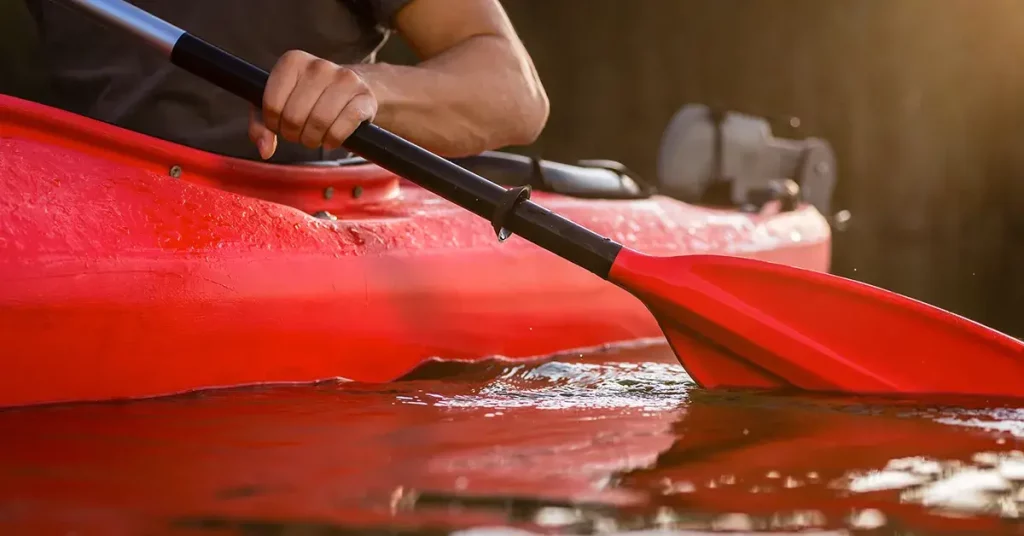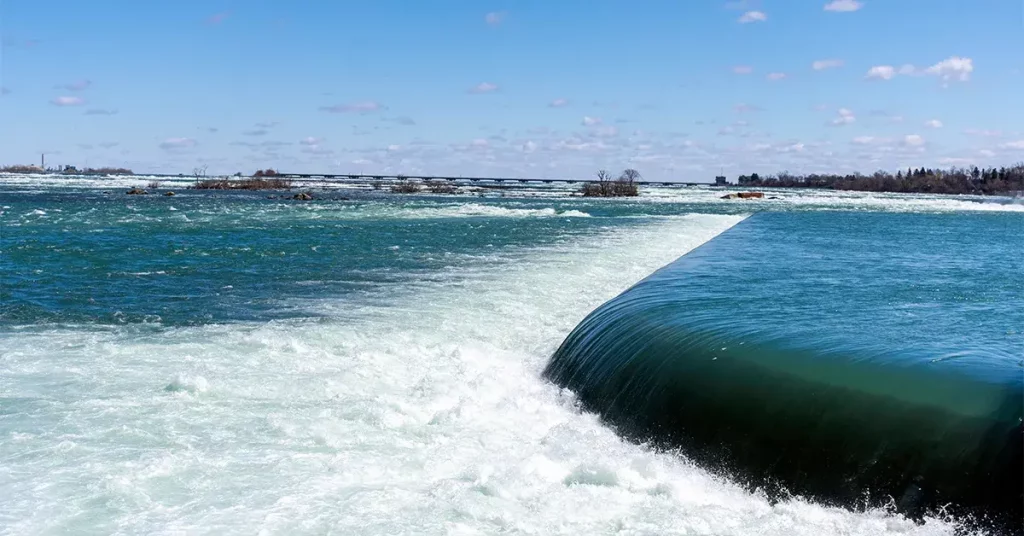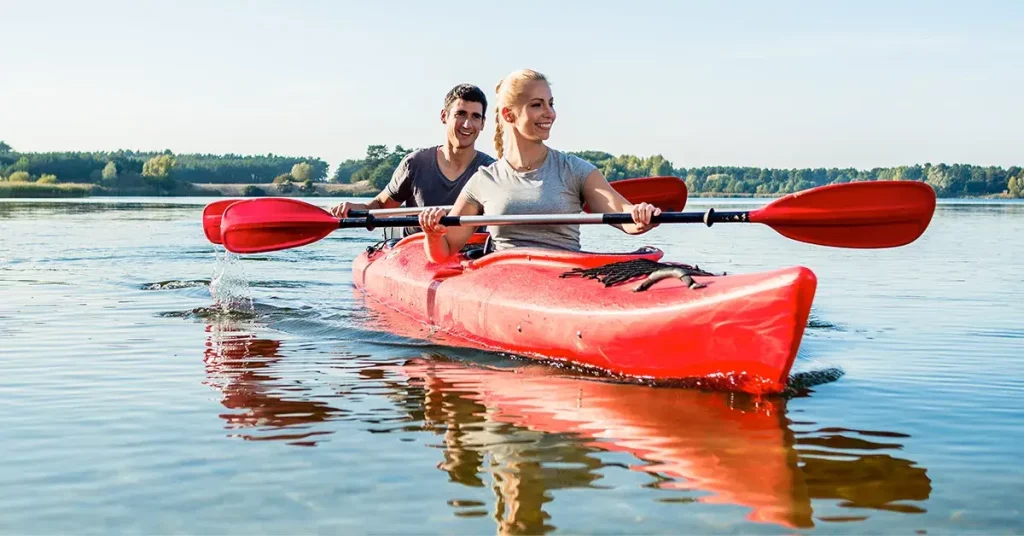Figuring out how to increase the weight capacity of a kayak is on every kayaker’s mind. Asking yourself how much can your kayak hold and preparing accordingly can be the difference between vacationing miserably or comfortably.
It’s essential to mind the kayak’s weight limit because your kayak does need to stay afloat at the end of the day. But if you’re going on a long-distance kayaking trip, the question of increasing weight capacity will inevitably pop up since many kayakers wish they could bring along more kayak gear.
I’m an experienced kayaker who has been a commercial whitewater kayak guide for over ten years so I’ve come up with several ways to increase the highest weight capacity of a kayak without compromising its buoyancy.
These tips include where you kayak, how you pack your kayak, proper paddling technique, and the design of your kayak.
I’ve made mistakes, including almost seeing my kayak sink, so that you don’t have to. By the end of this article, I promise you will be able to bring more gear.
Let’s get into it!
Where You Kayak

This might be surprising, but the location of your next kayaking adventure can hugely impact your kayak’s weight capacity. It is one of the easiest ways to learn how to increase the maximum weight capacity of a kayak.
This answer comes in two parts: one that will minimize the negative impacts of overloading a kayak and another that will allow you to increase the weight limit of your kayak.
Overloading
Paddling through rough waters like waves and rapids will cause your kayak to take on much more water than paddling on a calm lake. The more water splashes on your cockpit, the more water will enter your kayak and the heavier it will get.
When pushing the weight limit of your kayak, rough waters become particularly dangerous. Stick to calm, flat waters if you plan on overpacking or have a heavy kayak.
Obtaining a Higher Weight Capacity
If you are looking at going on an extended kayaking adventure and are worried about the weight capacity of a kayak, then I recommend going on a saltwater adventure. Saltwater will give you more buoyancy than freshwater. As a result, your kayak will ride higher in the water when in saltwater. This can give you the additional leeway needed to pack extra weight.
Overall
How much weight a kayak can handle will vary depending on the type of water and if you should worry about water splashing onto the kayak. Pick your paddling location carefully.
Packing Your Kayak

The first way to increase the maximum weight capacity of your kayak is by paying attention to how you pack your kayak.
Start by placing the heaviest items in the middle of your kayak. This will help keep your kayak balanced and minimize how much it wobbles. Next, try to keep the majority of the weight low in your kayak.
Packaging your kayak appropriately will stay stable and minimize the amount of water you take. Proper packing is an easy way to learn how to increase weight capacity on your kayak. Body weight and gear weight are additional factors to consider. If you’re kayaking with friends, consider distributing yourselves among several kayaks.
Proper Paddling Technique

Using the right type of paddle strokes is an underrated method for increasing weight capacities. Good paddling helps you keep control of your kayak when you have loaded it to the limit. Adding foot braces might help you keep the proper posture while still being comfortable.
Proper techniques minimize the amount of water that enters the kayak’s cockpit and are excellent for minimizing fatigue.
Kayak Design

The final and most effective option is to alter the design.
Pay attention to the kayak’s shape. A kayak with more depth can carry more weight. A wider kayak provides more stability. A longer, more narrow kayak is faster. Kayaks with a deep v shape tend to be quicker. The hull design is a large part of determining what most kayaks are capable of.
This can be a considerable undertaking but will also pay huge dividends. If you are set on changing the kayak’s design, the main area to focus on is the hull.
Some people even add pool noodles to the kayak’s hull, which provides some, if not much, extra buoyancy. Adding kayak outriggers can have a similar effect while increasing stability.
Please approach this process with caution. Kayaks are purpose-built. A fishing kayak and touring kayak have different designs for a reason. Altering a kayak’s hull can be potentially dangerous and can cause irreparable damage. However, if done properly, you can majorly improve a kayak’s performance and buoyancy.
Inflatable Bags
Tying inflatable bags to the stern and hull can increase your kayak’s buoyancy.
Float bags displace excess water and are useful in case of hull breaches, hatch failures that typically occur due to humidity or temperature issues, and if problems with your kayak’s bulkhead compartments occur. If a kayak’s cockpit fills, you could sink, and a float bag can help prevent that.
You can also fill float bags with helium rather than oxygen to maximize buoyancy.
I recommend the NRS Infinity Float Bags. The NRS Infinity Float Bags come in several sizes with a lifetime warranty and are affordable to boot.
Wrap Up
Many factors influence your maximum capacity. Remember:
- The location of your next kayak adventure can make it much safer to add on a couple of extra pounds, and saltwater kayaking can also give you an extra boost.
- It is essential to pack your kayak appropriately to increase your weight capacity. An evenly distributed load and proper paddling technique can minimize the dangers of overpacking your kayak.
- Pay attention to how much your gear weighs,
- You can adjust the design of your kayak, but be careful. I recommend buying a new kayak if you need to drastically increase weight capacity. It is the safest and easiest way to increase maximum capacity.
Let us know in the comments below how you increase the weight capacity of your kayak.
See you on the water!




